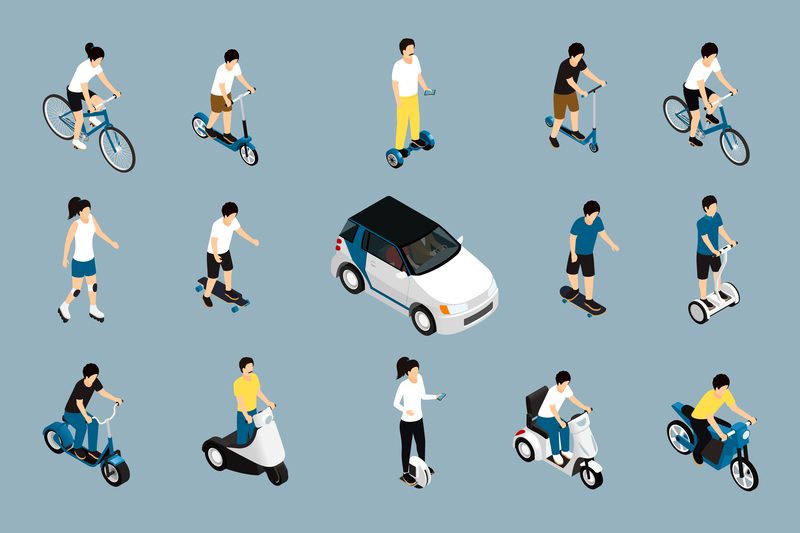
Traffic Nerds Assemble! It’s a great slogan on a t-shirt (and yes I have one!) but it also sums up the problem of the ITS and wider transport industry in three words. It is frequently seen as geeky and a bit of a secret club that takes on the rest of the world in a brave, underdog way and it is seen as being predominantly masculine - the aforementioned t-shirt was not available in women’s sizes. (Oh no, we thought it was – apologies! ITS ed).
Alistair Gollop’s article on how to attract younger people to ITS eloquently explains the issues facing the sector and offers practical ways of encouraging younger people to enter this branch of the industry specifically. But are we failing in how we attract younger entrants to the industry or is it the industry itself that has an image problem compared to other industries? Perhaps it is simply not seen as an attractive profession to work in?
The word ‘transport’ tends to conjure up an image of bus depots or warehouses and the working environment is often thought to be a bit old fashioned and involving oily hands. Within this, ‘intelligent transport’ sounds a bit nonsensical – is there non-intelligent transport too?
Town and highways planners tend to be blamed for all of the woes that travellers experience - and are, most certainly, personally responsible for potholes not being fixed. Other careers are more clearly defined in people’s minds. Even though other STEM sectors have recruitment issues too, most people have a fair idea of what a civil engineer does or where an electronics engineer might work - but jobs in transport, and ITS in particular, are an amorphous concept.
The ‘real’ transport industry
The transport industry has very few icons. Representation in the mainstream media is often of older gentlemen taking prosaic train rides or highly experimental space exploration but what is lacking is visibility what the ‘real’ transport industry is all about. Why would anyone ever consider a career in a sector they don’t understand?
ITS is a life-changing, planet-saving industry! Without it, cities, would be in gridlock, smothered in smog and clouds of pollution, public transport as we know it would not exist and the most common of concepts such as satnavs and tap-on/tap-off systems and bike-share schemes would not exist.
But you know that already (otherwise you wouldn’t be reading this article). The real question is how do we harness the potential the industry has and ensure that the young people considering their careers realise the real potential they have to bring about decarbonisation, sustainability and social equality?
“Why would anyone ever consider a career in a sector they don’t understand?”
ITS is about solving problems and adopting new approaches to promote sustainability, decarbonisation and fairness. There is a need to reflect and promote this in courses and job titles, perhaps Design for Sustainable Living or Design for Green Mobility rather than Town/Transport Planning. Course content that uses case studies to explain and demonstrate the principles and real-world impact of ITS projects. Or job descriptions that explain how the work individuals undertake creates benefits rather than a list of software packages and acronyms applicants need to understand.
What are the careers opportunities in intelligent transport systems?
Other industries have run campaigns to raise awareness of the careers opportunities they offer - for example Generation Logistics, Reach for the Sky and a variety of military recruitment campaigns. These focus on explaining the range of jobs available beyond what might be perceived as the typical roles in the sector and showing how young people’s personal skills are a good fit.
They appear to succeed in creating awareness: in the first 11 months Generation Logistics - a programme funded jointly by the UK’s Department for Transport (DfT) and industry - achieved almost 600,000 visits to its website and built a network of almost 200 ‘ambassadors’ posting and promoting on social media. Meanwhile the British Army’s Snowflake campaign was so successful that it resulted in the highest number of recruits in 10 years.
The ITS industry is realistically too small to run advertising campaigns running into the hundreds of thousands of pounds, but a joined-up approach across employers and professional institutions using social media activity to highlight great case studies of young people doing amazing things in ITS might be a good place to start…and yes, that will involve TikTok!
There is increasing awareness that what younger people want from their working life differs from the generations before them. Longer graduate programmes following university with regular rotations and possibly site moves may not be as attractive as they once were to a generation who expect to change role frequently during the course of their career.

Their outlook on life in general is more balanced than that of older workers and, according to Microsoft's Work Trend Index Annual Report, 51% of Gen Z employees (roughly, those born between the mid-1990s and 2010) are more likely to prioritise health and wellbeing over work.
An article by Giselle Kovary, president and co-founder of N-gen People, comparing generational working styles, identified that they see their career as a way to grow personally rather than the Baby Boomer generation, which views career as a representation of self-worth.
Approaches to recruitment are changing too. While the CV is not yet dead, video resumes, online assessments and a whole plethora of job websites make it difficult for an organisation to stand out to candidates. To attract younger applicants, the approach to job posts and interviews now is expected to have as much emphasis on the organisation selling itself to the candidate as the candidate selling themselves to the organisation.
Openness and transparency
Job adverts need to be much more transparent and open about what the role entails with clear descriptions of “what you will be doing” in a role rather than relying on an assumption that applicants automatically know what a job title entails. For instance, what is the difference between a Signal Engineer and a Signals Engineer?
Younger people are seen as being more aware of the problems in the world around them and many are naturally drawn to look for solutions to societal problems. A large number of start-ups have appeared in the ITS space, without many of their founders ever having come across the term ‘ITS’.
At June’s Move conference in London, 600 start-ups were registered and the non-scientific study of the founders showed the majority to be below the average age of the more traditional industry attendees. According to HR News, 40% of teenagers would like to start their own business and 25% of 18-24 years olds aim to do so in the next five years.
“ITS is about adopting new approaches to promote sustainability, decarbonisation and fairness”
In turn, many of the Innovate UK-funded competitions address specific challenges or application areas, such as artificial intelligence or decarbonisation, or are aimed specifically at young innovators.
The UK government’s Catapults already embrace theme areas rather than specific industries: for example, Connected Places or Digital, and many projects have emerged looking at applications that are ITS solutions but by a different name – Smart City Applications, Autonomous Vehicles, Future Flight.
How can the enthusiasm and creativity of these entrepreneurs be brought into the mainstream and nurtured to provide wide-reaching benefits without scaring them off with long and complicated-sounding standards and certifications? Could the threads be brought together, and an ITS-themed challenge developed for young entrepreneurs to raise awareness of the sector and the real-world challenges that are waiting to be solved? Perhaps a Smart City Living Competition?
It will take time for the ITS industry to improve the visibility and understanding of the sector. But following Alistair Gollop’s excellent recommendations for proactive outreach - and with the ideas outlined above to raise the awareness of the exciting and world-impacting solutions that ITS professionals work on – hopefully, Generation Alpha will be queuing up to work in the community.

ABOUT THE AUTHOR
Sharon Kindleysides is a global ITS and future mobility consultant











